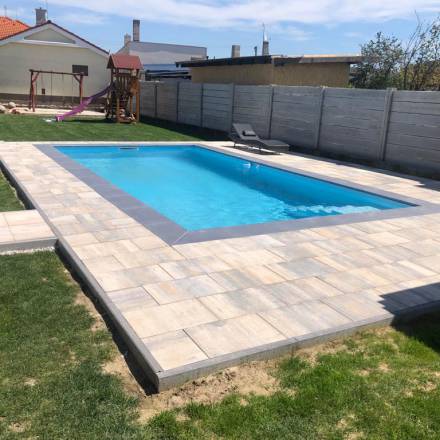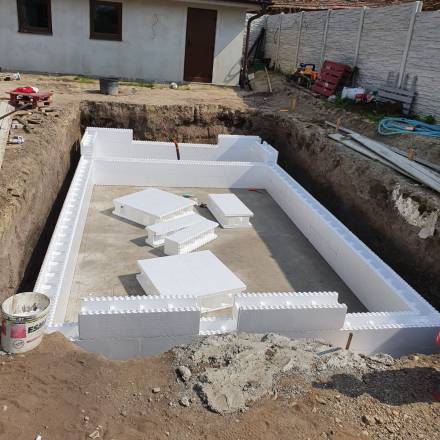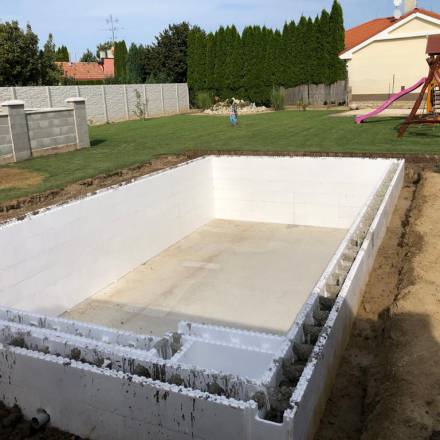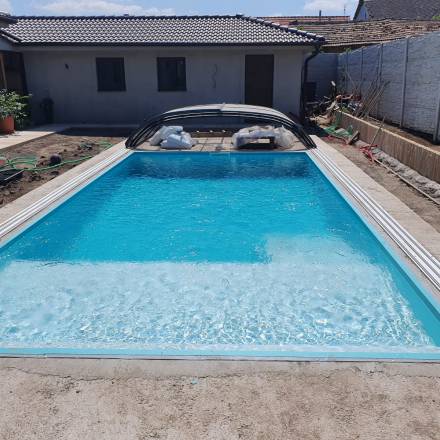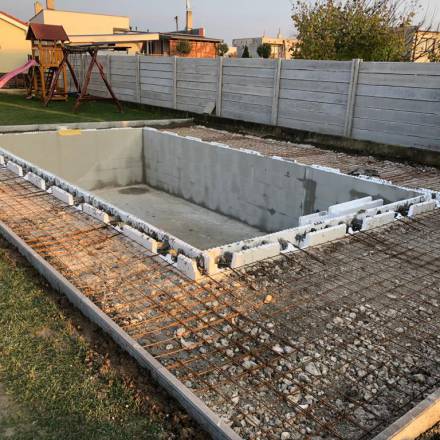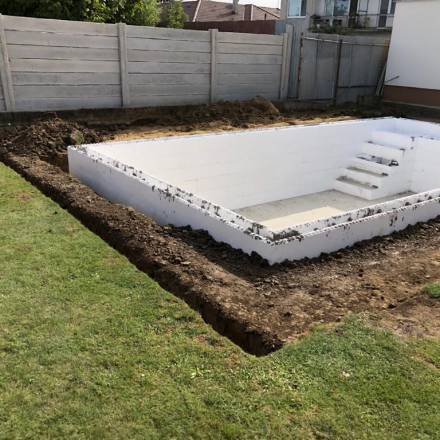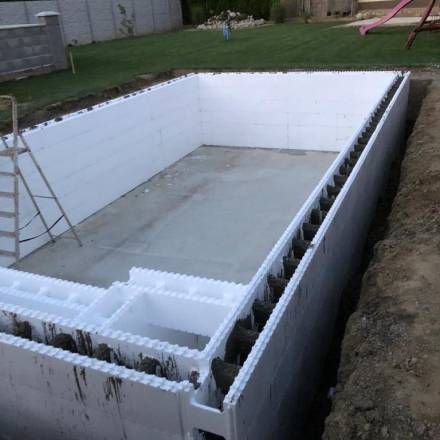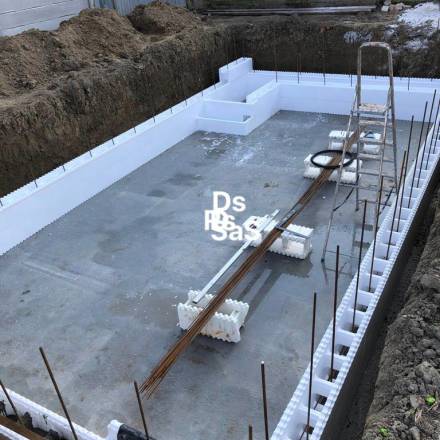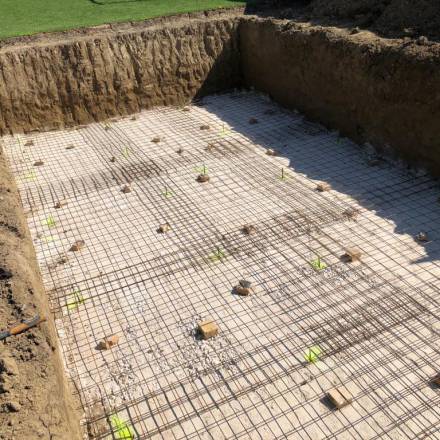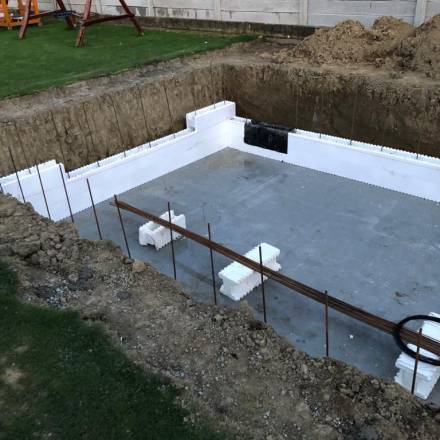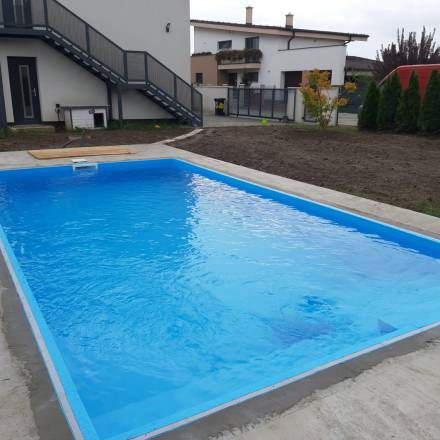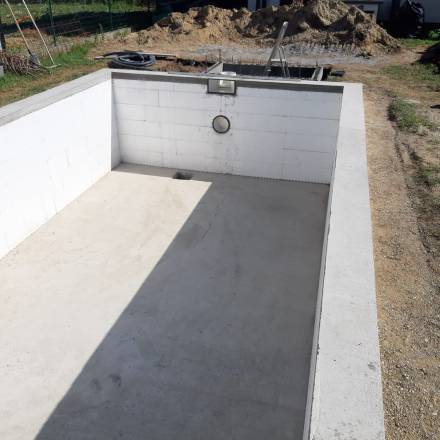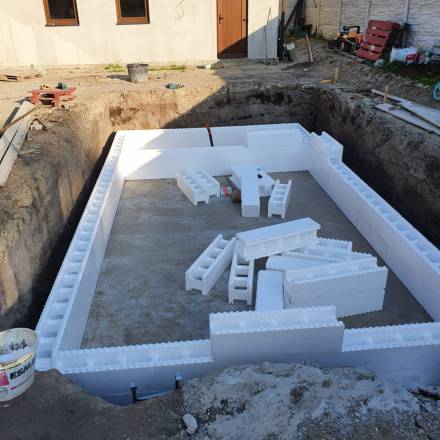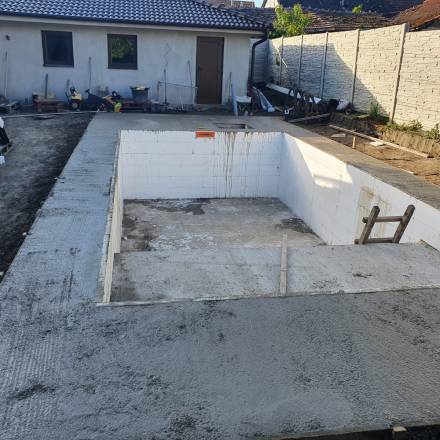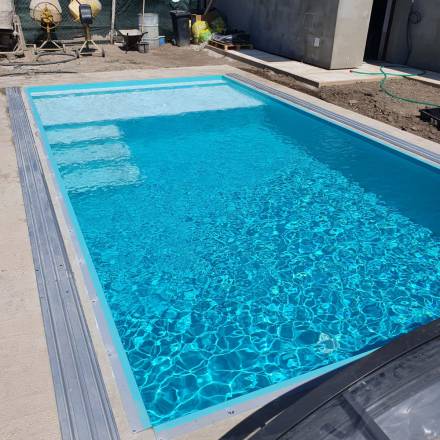Технологія будівництва басейнів
Будівництво басейнів з термоблоків має ряд вагомих переваг у порівнянні з звичайним бетонним чи композитним басейном.
- Чаша басейну має чудові теплотехнічні характеристики. Враховуючи те, що стіни та підлога басейну утеплені, прогрів води відбувається набагато швидше ніж в звичайній чаші. Немає необхідності прогрівати стіни, або плиту підлоги - гріємо тільки воду. Такий самий, але в зворотньому напрямку, ефект і під час охолодження води. Як підсумок, заощаджені витрати на підігрів басейну та подовжений купальний сезон у власному басейні.
- Завдяки еластичності стін басейну у Вас не виникне згодом проблем з температурними навантаженнями, і як наслідок тріщинами, які можуть виникнути через морози в монолітних бетонних конструкціях.
- Пінополістирол майже не поглинає воду, в ньому не розмножується пліснява, грибки чи будь які бактерії.
- Ідеальна геометрія блоків та спеціальний замок «шип-паз» дозволяють отримати рівні стіни чаші басейну.
- Для будівництва чаші басейну з термоблоків, не обов’язково бути професійним будівельником, блоки складаються за принципом кубиків ЛЕГО, всередину яких вставляється арматура та заливається бетон.
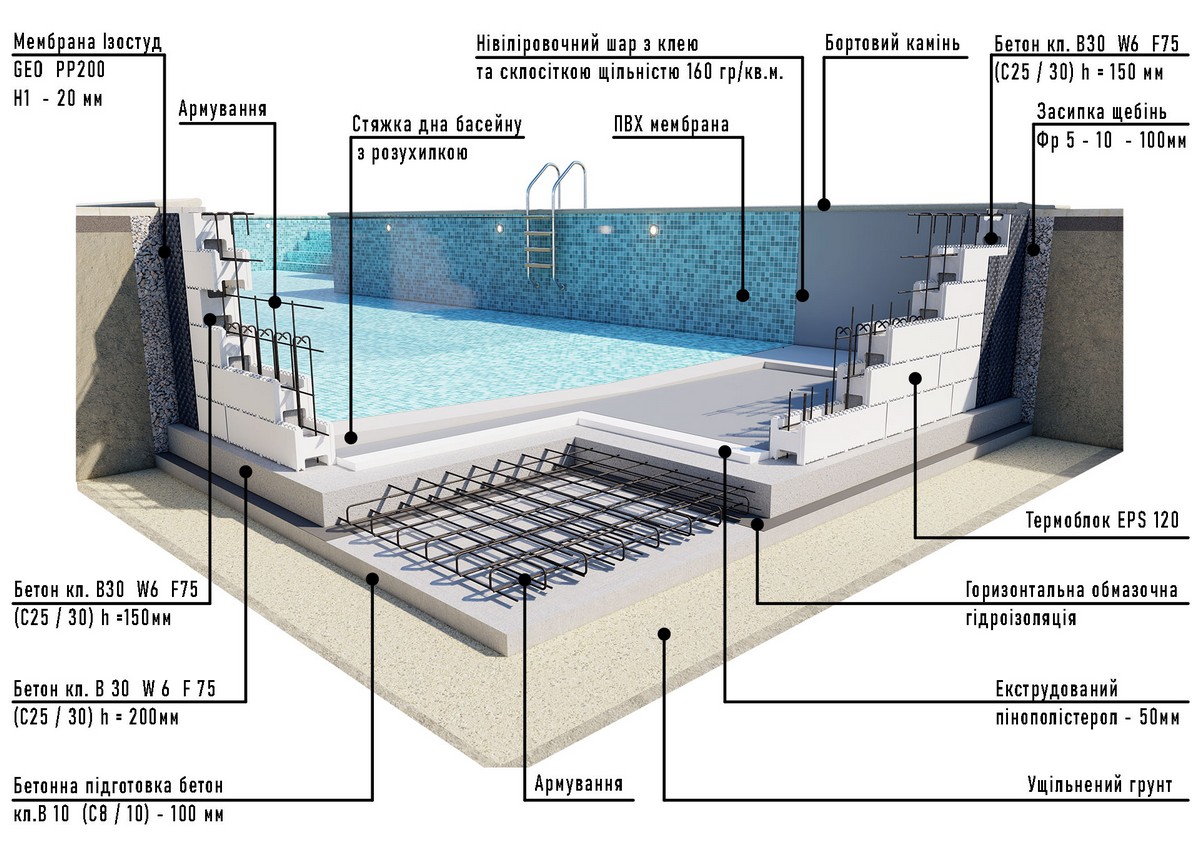
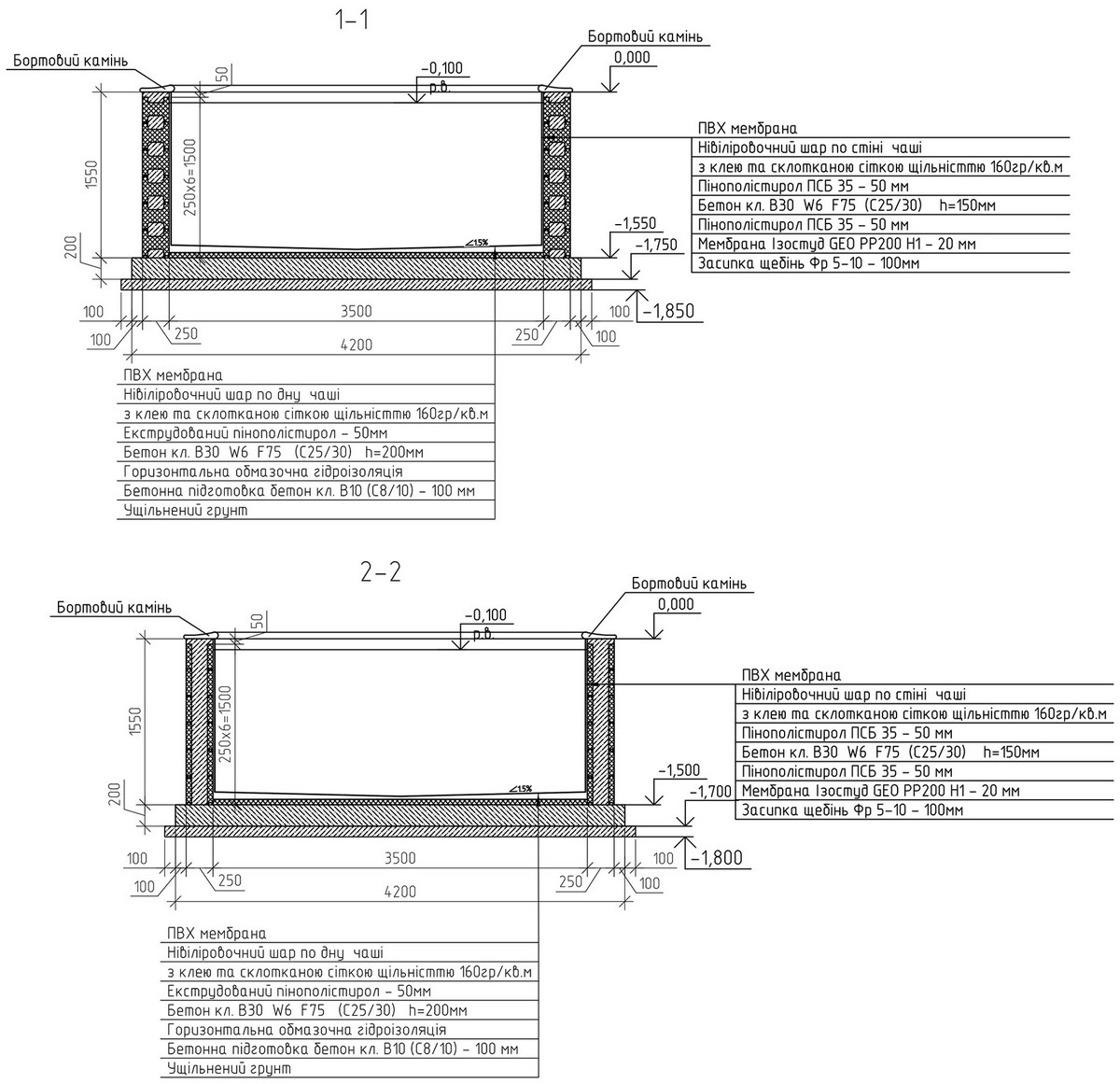
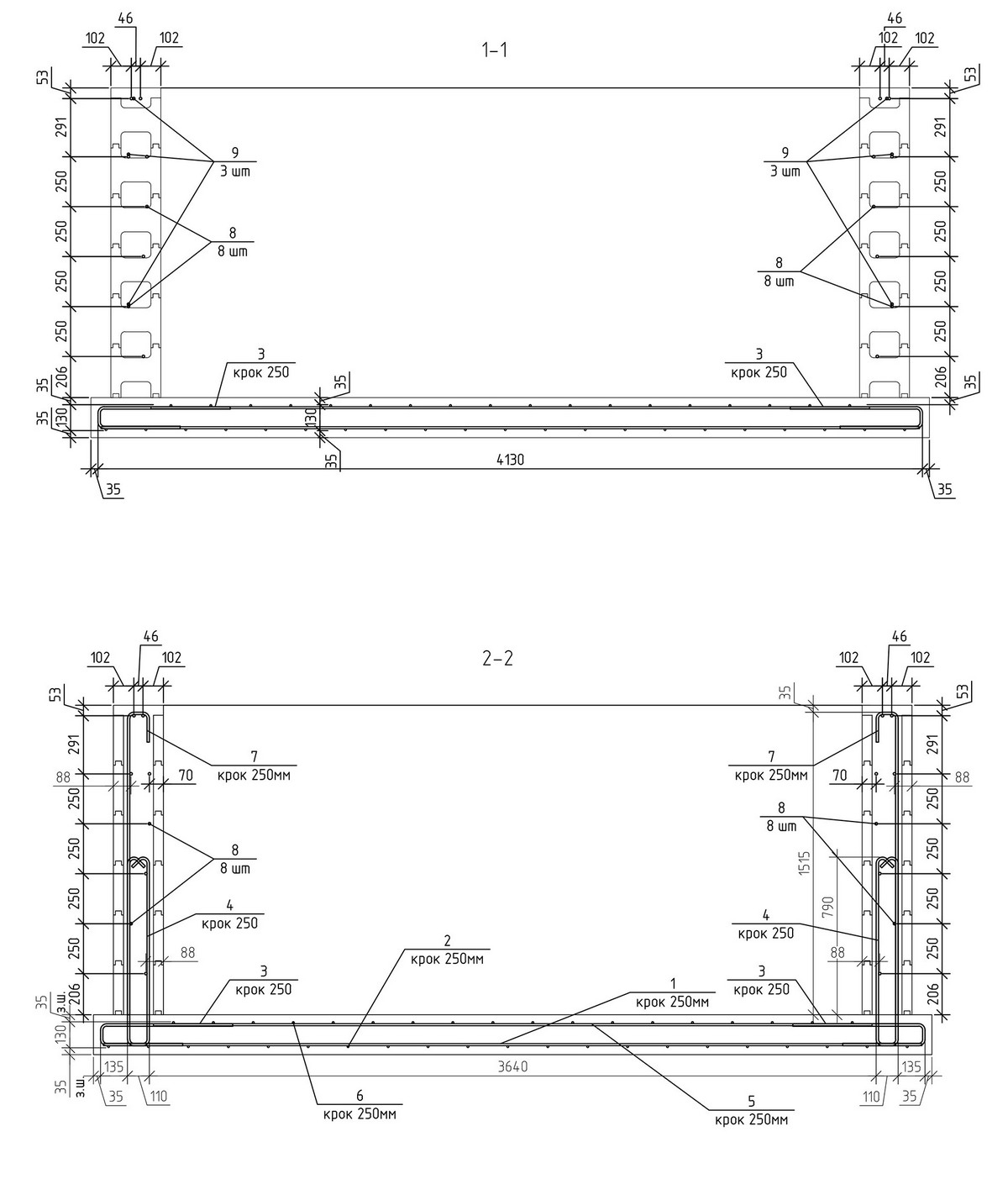
Технічні характеристики:
Найменування | Блок рядовий/торцевий EPS 90 | Блок рядовий/торцевий EPS 120 | Блок розбірний EPS 120 |
Геометричні розміри | 250х1000х250 | 250х1000х250 | 250х1000х250 |
Марка пінополістиролу | М25 | М25. | М35 |
Товщина стінок з пінополістиролу | 2 шт. х 50 мм. | 2 шт. х 50 мм. | 2 шт. х 50 мм. |
Товщина бетону (внутрішня відстань між стінками) | 150 мм | 150 мм | Регулюється 150 - 450 мм |
Витрати бетону | 0,13 м.куб./м кв. | 0,13 м.куб./м кв. | 0,15-0,45 м.куб./м кв. |
Водопоглинання (за 24 години) | 0,5% | 0,5% | 0,5% |
Why use thermoblocks for pool construction?
The insulated polystyrene walls and floor help water heat up faster and cool down slower. This saves energy and extends the swimming season.
Are these pools resistant to frost and temperature changes?
Yes. The elasticity of polystyrene prevents cracking even under extreme temperature stress.
What about hygiene and moisture resistance?
Polystyrene absorbs very little moisture, does not support mold, fungus, or bacteria growth.
How smooth are the finished walls?
The blocks have perfect geometry and tongue-and-groove joints, ensuring accurate and smooth pool walls.
Do I need professional builders?
No. The structure assembles like LEGO: blocks are manually placed, reinforced, and filled with concrete.
What are the dimensions and specs of the blocks?
- Block size: 250 × 1000 × 250 mm;
- Two 50 mm layers of polystyrene;
- EPS grade: 90 or 120 (demountable — up to 120);
- Concrete core: 150 mm (up to 450 mm in demountables);
- Concrete consumption: 0.13 m3/m2 (up to 0.45 m3/m2 in demountables).
How much water is lost through absorption?
Only 0.5% over 24 hours, proving the structure's excellent protection and water resistance.
How is reinforcement installed?
Reinforcement meshes or cages are placed inside the blocks, then concrete is poured to create a solid monolithic pool shell.
How is waterproofing and finishing done?
After concreting, waterproofing is applied using PVC membranes, coating systems, or penetrating sealants, followed by finishing with tiles or film depending on design requirements.
What is the step-by-step pool construction process?
- Excavation of the pit;
- Thermoblock assembly;
- Reinforcement placement;
- Concrete pouring;
- Waterproofing;
- Finishing the pool bowl.
